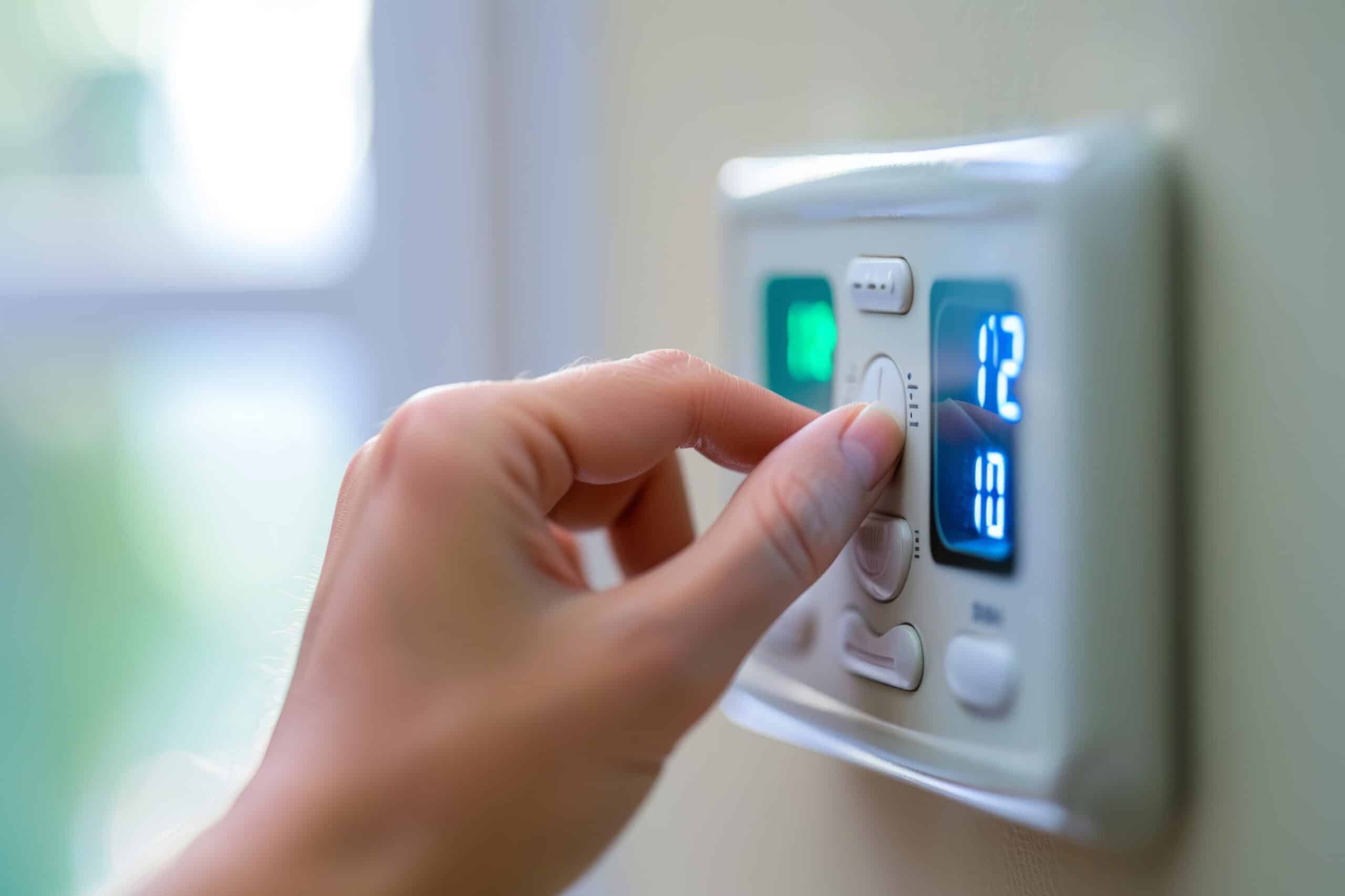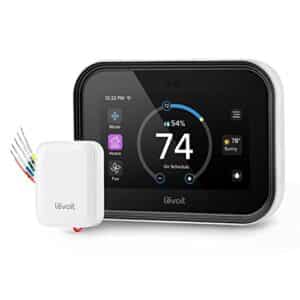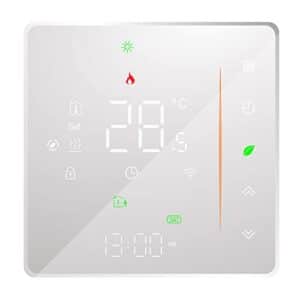What Is a Smart Thermostat?
Key Takeaways
- A smart thermostat uses advanced technology and sensors to control the heating and cooling systems in a home, enhancing comfort, saving energy, and providing convenience to homeowners.
- Key features of smart thermostats include geofencing, multiple sensors for temperature variation detection, and auto scheduling based on motion detection technology.
- The benefits of smart thermostats include energy efficiency, convenience of remote control, and cost efficiency through lower utility bills.
A smart thermostat is a device that uses advanced technology and sensors to control the heating and cooling systems in a home. It goes beyond the basic functions of a traditional thermostat by offering a range of features that enhance comfort, save energy, and provide convenience to homeowners. With the ability to learn and adapt to your schedule, integrate with other smart devices, and be controlled remotely through smartphones or computers, smart thermostats have revolutionized the way we manage our home’s temperature.
Features of Smart Thermostats
Smart thermostats come with a variety of features that make them stand out from traditional thermostats. Let’s take a closer look at some of the key features mentioned in the sources.
1. Geofencing
Geofencing is a feature that allows a smart thermostat to detect when your smartphone leaves a preset radius and adjust the temperature accordingly. This means that as you leave your home, the thermostat can automatically set the temperature to an energy-saving level, ensuring that you don’t waste energy heating or cooling an empty house.
2. Multiple Sensors
Smart thermostats can communicate with sensors placed throughout your home to improve comfort and efficiency. These sensors can detect temperature variations in different rooms and adjust the heating or cooling accordingly. By taking into account the temperature in each room, the thermostat can create a more balanced and comfortable environment throughout your home.
3. Auto Scheduling
Advanced scheduling is another feature of smart thermostats. By utilizing motion detection technology, the thermostat can create a schedule without requiring manual input. It learns your living habits and adjusts the temperature automatically to achieve maximum efficiency. This “set it and forget it” approach ensures that your home is always at the desired temperature without you having to constantly make adjustments.
4. Smart Fan Activation
Smart thermostats can also activate the furnace’s fan to balance temperatures in different rooms. By circulating the air more effectively, the thermostat can eliminate hot or cold spots and create a more even temperature distribution throughout your home.
5. Voice Activation
With voice activation, smart thermostats can be controlled using voice commands. This feature provides added convenience, allowing you to adjust the temperature without needing to physically interact with the thermostat or use your smartphone. By simply speaking to a virtual assistant like Google Assistant, Siri, or Alexa, you can change the temperature to your desired level.
Benefits of Smart Thermostats
Smart thermostats offer a range of benefits that make them an attractive choice for homeowners. Let’s explore some of these benefits based on the information provided in the sources.
1. Energy Efficiency
One of the primary benefits of using a smart thermostat is energy efficiency. By utilizing features like scheduling, geofencing, and tracking energy usage, smart thermostats optimize your heating and cooling systems and can potentially lead to energy savings. Independent studies have shown that customers can save around 10-15% on HVAC costs by using smart thermostats, with some manufacturers claiming even higher savings.
2. Convenience
Smart thermostats offer convenience by allowing you to control the temperature of your home remotely. Whether you’re at work, on vacation, or simply in another room, you can use your smartphone or computer to adjust the temperature from anywhere. This level of control ensures that you always come back to a comfortable home without wasting energy when you’re away.
3. Cost Efficiency
In addition to energy savings, smart thermostats provide cost efficiency. By optimizing your heating and cooling systems, these devices help to reduce energy consumption and, consequently, lower your utility bills. The initial investment in a smart thermostat may seem higher compared to a traditional thermostat, but the potential long-term savings justify the cost.
How Smart Thermostats Work
Smart thermostats work by leveraging technology and sensors to control the heating and cooling systems in your home. They are connected to Wi-Fi and can be accessed and adjusted remotely using a smartphone, tablet, or computer. Some smart thermostats even integrate with virtual assistants like Google Assistant, Siri, and Alexa, allowing you to control them using voice commands.
The installation process for a smart thermostat typically involves wiring and can be done by the homeowner. It requires a Wi-Fi connection to operate remotely. The setup instructions provided on the screen guide you through the installation process, making it simple and user-friendly.
Conclusion
Smart thermostats have revolutionized the way we control the temperature in our homes. With their advanced features, such as geofencing, multiple sensors, auto scheduling, smart fan activation, and voice activation, they offer enhanced comfort, energy savings, and convenience. By optimizing heating and cooling systems, smart thermostats promote energy efficiency, cost efficiency, and a more comfortable living environment. With the ability to be controlled remotely through smartphones or computers, they provide homeowners with unprecedented control over their home’s temperature.
Related Websites:
- The New York Times – The Best Thermostat
- This Old House – All About Smart Thermostats
- Digital Trends – Pros and Cons of Smart Thermostats
- Better Homes & Gardens – What Is a Smart Thermostat?
- SafeWise – How Do Smart Thermostats Work?
FAQs:
Q: What are the benefits of using a smart thermostat?
Using a smart thermostat offers several benefits. Firstly, it promotes energy efficiency by optimizing heating and cooling settings based on occupancy and user preferences. This leads to reduced utility bills and increased cost savings. Additionally, smart thermostats provide convenience through remote access and learning capabilities. They can also be integrated with other smart home devices, allowing for a more streamlined and connected home experience.
Q: How do smart thermostats contribute to environmental sustainability?
Smart thermostats contribute to environmental sustainability by promoting efficient energy usage. By optimizing heating and cooling settings, they help reduce energy waste and carbon emissions. This not only benefits the environment but also helps create a more sustainable future for generations to come.
Q: Can I install a smart thermostat myself or do I need professional installation?
The installation process of a smart thermostat can vary depending on the model and your existing HVAC system. Some smart thermostats offer DIY installation options with step-by-step instructions. However, in certain cases, professional installation may be recommended, especially if you are not familiar with electrical wiring or HVAC systems. It’s important to refer to the manufacturer’s guidelines and consult with a professional if needed.
Q: How can I control my smart thermostat remotely?
Controlling your smart thermostat remotely is simple and convenient. Most smart thermostats come with mobile apps that allow you to monitor and adjust temperature settings from your smartphone, tablet, or web browser. These apps provide a user-friendly interface and give you the flexibility to manage your thermostat anytime and anywhere, ensuring optimal comfort and energy efficiency.
Q: What are the potential concerns and considerations regarding smart thermostats?
When considering smart thermostats, it’s important to address potential concerns such as privacy and data security. As smart thermostats gather data about temperature and occupancy, it’s crucial to choose a reputable brand that prioritizes data protection. Additionally, users should be aware of any compatibility limitations with their existing HVAC systems before purchasing a smart thermostat. It’s always recommended to research and carefully evaluate the features and considerations associated with each model.






